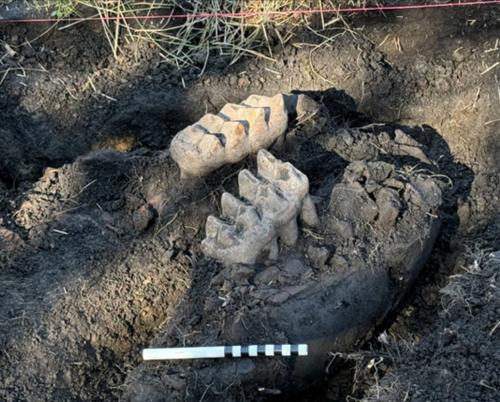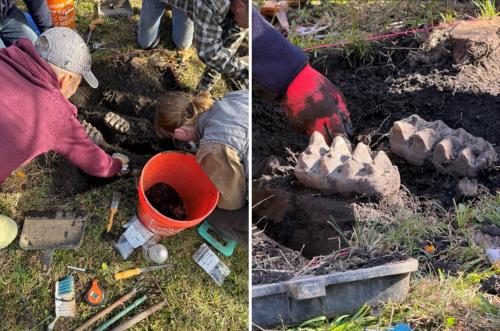
SCOTCHTOWN, N.Y. (1010 WINS) — A complete mastodon jaw was discovered in a New York resident’s Hudson Valley backyard, the first find of its kind in 11 years, the state Department of Education announced on Tuesday.
Researchers from the New York State Museum and SUNY Orange recovered the fossils behind a residence near Scotchtown after the homeowner noticed bone protruding from topsoil. The resident first found two teeth concealed by the fronds of a plant, and then two additional teeth just inches underground, before alerting professionals.
“When I found the teeth and examined them in my hands, I knew they were something special and decided to call in the experts,” the homeowner said. “I'm thrilled that our property has yielded such an important find for the scientific community.”

Excavation efforts led to the recovery of a full, well-preserved mastodon jaw belonging to an adult, alongside a piece of a toe bone and rib fragment.
“While the jaw is the star of the show, the additional toe and rib fragments offer valuable context and the potential for additional research,” Chair of SUNY Orange’s Behavioral Sciences Department Dr. Cory Harris said. “We are also hoping to further explore the immediate area to see if there are any additional bones that were preserved.”
Over 150 mastodon fossils have been found in New York state to date (about one-third of which were discovered in Orange County), making the area a premier hotspot for the Ice Age inhabitants.
“This discovery is a testament to the rich paleontological history of New York and the ongoing efforts to understand its past,” Dr. Robert Feranec, director of Research & Collections and curator of Ice Age Animals at the New York State Museum, said. “This mastodon jaw provides a unique opportunity to study the ecology of this magnificent species, which will enhance our understanding of the Ice Age ecosystems from this region.”
The fossils will be carbon dated and a comprehensive analysis will be done to determine the mastodon’s age, diet and habitat while alive. It will then be featured in public programming in 2025.
“Fossils are resources that provide remarkable snapshots of the past, allowing us to not only reconstruct ancient ecosystems but also provide us with better context and understanding of the current world around us,” Feranec said. “Each discovery like this one brings us one step closer to piecing together the full story of New York.”
The public is encouraged to report similar discoveries to the appropriate authorities.
